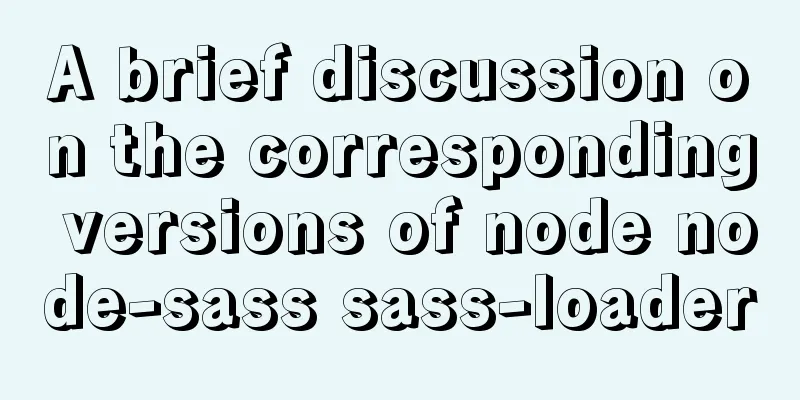Understanding render in Vue scaffolding

|
In the vue scaffolding, we can see that in the new Vue code in the entry file main.js there is a code render: h=>h(App);
This code is not like the code we usually use when using vue. I will write the general Vue code
import Acomponent from "../Acomponent"
vm = new Vue({
el:"#app"
data(){
return {
a:"aaa",
b:"bbb"
}
},
template:`<div>
<span>this is a test</span>
<Acomponent></Acomponent>
</div>`,
components:{
Acomponent
}
})
The above code is the code we can understand normally. There is a template, and other components can be introduced in the template. But why is there a render method in the scaffolding? According to our own ideas, we can change the scaffolding code to see
Start the scaffolding, npm run serve and check the result. An error is reported. The information is as follows
So, we can say that the Vue introduced by the scaffolding is a Vue without a template parser. If you want to parse the template, you need to use the render function to help you go to the node_modules folder of the project to see which Vue we have introduced. import Vue from 'vue'
We open the vue/dist file and see a lot of files, as shown in the figure
The error message says that we have two ways to solve it, one is to introduce the complete vue.js and the other is to use render.
Let's look at the second one, introducing Vue without a template parser, using render,
Through console.log, we can see that the parameter createElement is also a function, which creates a VNode object
Next we use arrow functions to simplify render
render(createElement){
return createElement("h1","123");
}
//Use arrow functions to simplify render:(createElement)=>{return createElement("h1","123")}
// There is only one parameter in the arrow function, so you don't need to write parentheses. If there is only one line in the method body, you don't need to write curly braces, and you don't need to write return for the return value.
//So the above code can be simplified to this render:createElemnet=>crementElement("h1","123")
//Similarly, createElement is originally customized, we can also change the name render: h=>h("h1","123")
//This is very similar to the code in the scaffolding. In the h function, if it is a native HTML tag, it is written like this. If it is a Vue component, it can be passed directly. All we have is render:h=>h(App)This is how render is written Let's talk about why the scaffolding introduces an incomplete Vue for use. We know that after the Vue code is completed, it needs to be packaged, and the core code of Vue is indispensable. After we package it, we don't need to parse the template again. Then, the template parser in the core code of Vue is not needed at all. Therefore, in order to reduce the size of the code, Vue removed the template parser, but when we develop, we need to use it again, so we create a render method to parse the template. This is the end of this article about understanding render in Vue scaffolding. For more relevant Vue render understanding content, please search 123WORDPRESS.COM’s previous articles or continue to browse the following related articles. I hope everyone will support 123WORDPRESS.COM in the future! You may also be interested in:
|
<<: Summary of commonly used performance test scripts for VPS servers
>>: Why the explain command may modify MySQL data
Recommend
How to install ionCube extension using pagoda
1. First install the pagoda Installation requirem...
Comparing Document Locations
<br />A great blog post by PPK two years ago...
WeChat applet picker multi-column selector (mode = multiSelector)
Table of contents 1. Effect diagram (multiple col...
How to convert extra text into ellipsis in HTML
If you want to display extra text as ellipsis in ...
Detailed explanation of JavaScript event concepts (distinguishing between static registration and dynamic registration)
Table of contents Events in js Event Type Common ...
More popular and creative dark background web design examples
Dark background style page design is very popular...
How to deploy nextcloud network disk using docker
NextCloud You can share any files or folders on y...
MySQL query specifies that the field is not a number and comma sql
Core SQL statements MySQL query statement that do...
How to implement remote automatic backup of MongoDB in Linux
Preface After reading the previous article about ...
Sql query MySql database table name and description table field (column) information
The following is an introduction to using SQL que...
Vue implements student management function
This article example shares the specific code of ...
Summary of JS tips for creating or filling arrays of arbitrary length
Table of contents Preface Direct filling method f...
Detailed explanation of the 4 ways to import CSS files: inline, inline, external, and imported
CSS import method - inline Through the style tag ...
Solve the error during connect exception in Docker
When you first start using Docker, you will inevi...
How to clear the timer elegantly in Vue
Table of contents Preface optimization Derivative...


















